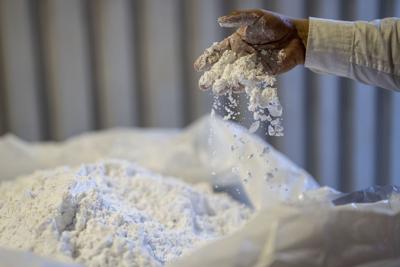So you’re purring along — not even the right verb for the sound of silence — in your Tesla. You’re proud of your contribution to the environment, even if you turn a deaf ear to the latest shenanigans of Elon Musk in the Twittersphere. Or maybe you’re more down-market and humble in Nissan’s Leaf, a Camry for the woke crowd. Either way, you can chew your gluten-free granola knowing you are doing your part to give back to Mother Earth for our carbon footprint.
While running an electric car over the long haul might beat the impact of an internal combustion engine, there is actually a higher carbon footprint to produce an electric vehicle due to the energy required in mining and manufacturing its substantial lithium-ion batteries.
Far be it for me, with my old V8, to knock the impulse to be eco-conscious. But the world economy tends to be counterintuitive, which is why so few people understand it, including presidents. It is always easier to feel worthy driving around the block rather than killing your cocktail hour pondering how they packed all that battery power beneath the running board. Or who had to suffer and even die to mine and refine the rare earth minerals.
There are five essential minerals used in varying measure in all lithium-ion batteries, which are the heartbeat of electric cars, laptops, mobile phones and whatever they think of next to drive us pell-mell into the Jetsons future, cost to culture and national security aside. Those five elementary ingredients are cobalt, graphite, lithium, manganese and nickel. How much of this big five is made in the U.S.? Very little. The plot only sickens.
Before we spin the globe, from a national security standpoint it is harder to sleep soundly at night knowing that the People’s Republic of China controls 97 percent of all rare earth production, according to Yale Environment 360. When it comes to battery elements, China’s hold on the market is a shudder-inducing 80 percent. Now ask yourself why we tread so softly when it comes to Taiwan and the growing threat in the South China Sea. If push comes to shove and we run short of the minerals that power our lives, all the blue recycling bins in the nation won’t do us any good. Less than 1 percent of rare earth metals get recovered for reuse.
When it comes to cobalt, first of our five highlighted minerals, three-fourths of its battery supply comes from China. Take that away, and Tesla stock takes a nosedive. Beyond the security issues related to China, cobalt mining takes its place with the child-labor horrors of Charles Dickens’ day. In the Democratic Republic of the Congo, source of 68 percent of the world’s cobalt, one-third of that is dug by artisanal miners — many of them children — with no safety equipment. I must have missed your tweet about that, Elon. Where are the Tesla stockholders demanding Congolese compliance with ESG norms? It’s still “dig we must” in a heart of darkness out of Joseph Conrad.
Where does the next rare earth mineral, graphite, come from? Most is from China. And the L-word that puts the Li-ion in batteries? About 58 percent comes from briny pools high in the Andes in the “Lithium Triangle” of Chile, Argentina and Bolivia. The Indigenous communities of those regions have been resisting this intensive mining, which damages fragile ecosystems, drains wetlands and depletes scarce water resources.
As for manganese, 28 percent is mined in South Africa, whose child labor enforcement practices have seen little real improvement. Most of the world’s nickel, the fifth of the rare earth minerals that power advanced batteries, is produced in Indonesia, a Sunni Muslim nation where western targets have been frequently attacked by militant Islamist groups. Taken together with South Africa, the Lithium Triangle in the Andes and an increasingly aggressive China, it’s a regular hornet’s nest of difficult competitors and dangerous adversaries.
Mark Twain reputedly said that “History never repeats itself, but it does often rhyme.” Whoever said it, it was never so true as the current molasses-pour of the materiel of warfighting for Ukraine.
Add to this deeply concerning resource supply-chain our reliance on Taiwan for critical microprocessors. As noted in a recent column, the PRC would dearly like to take control of these. A picture emerges of a world in which our ability to communicate and compute, let alone commute in Teslas, is largely predicated on an increasingly frictional relationship with China. Should President Xi Jinping decide to square off against us and put the squeeze on Taiwan, his control of the future could relegate American potency to the past.
It is one thing to seek energy independence from the Middle East, whose control of oil is a security and economic threat. It is another thing entirely to rest our very modernity on a bed of Chinese coal — or rather, today’s rarer elemental commodities. That way lies power loss an Energizer Bunny can’t recharge.



